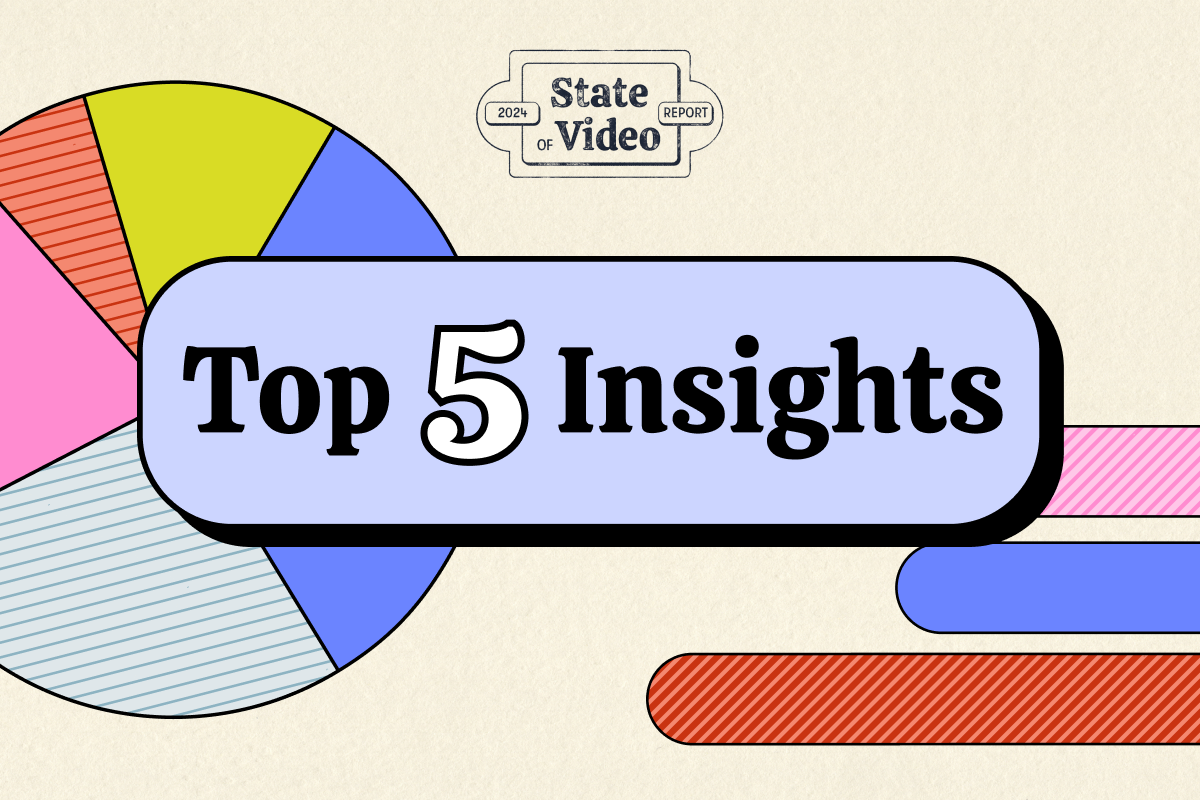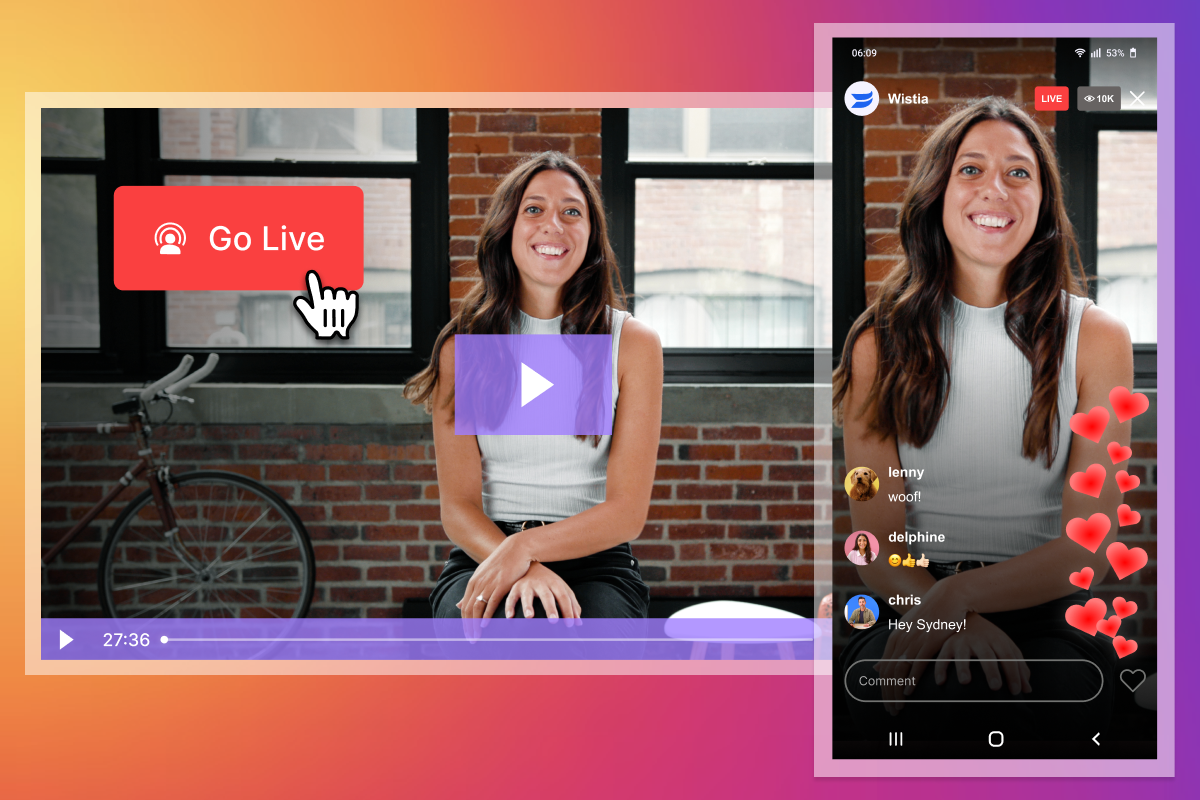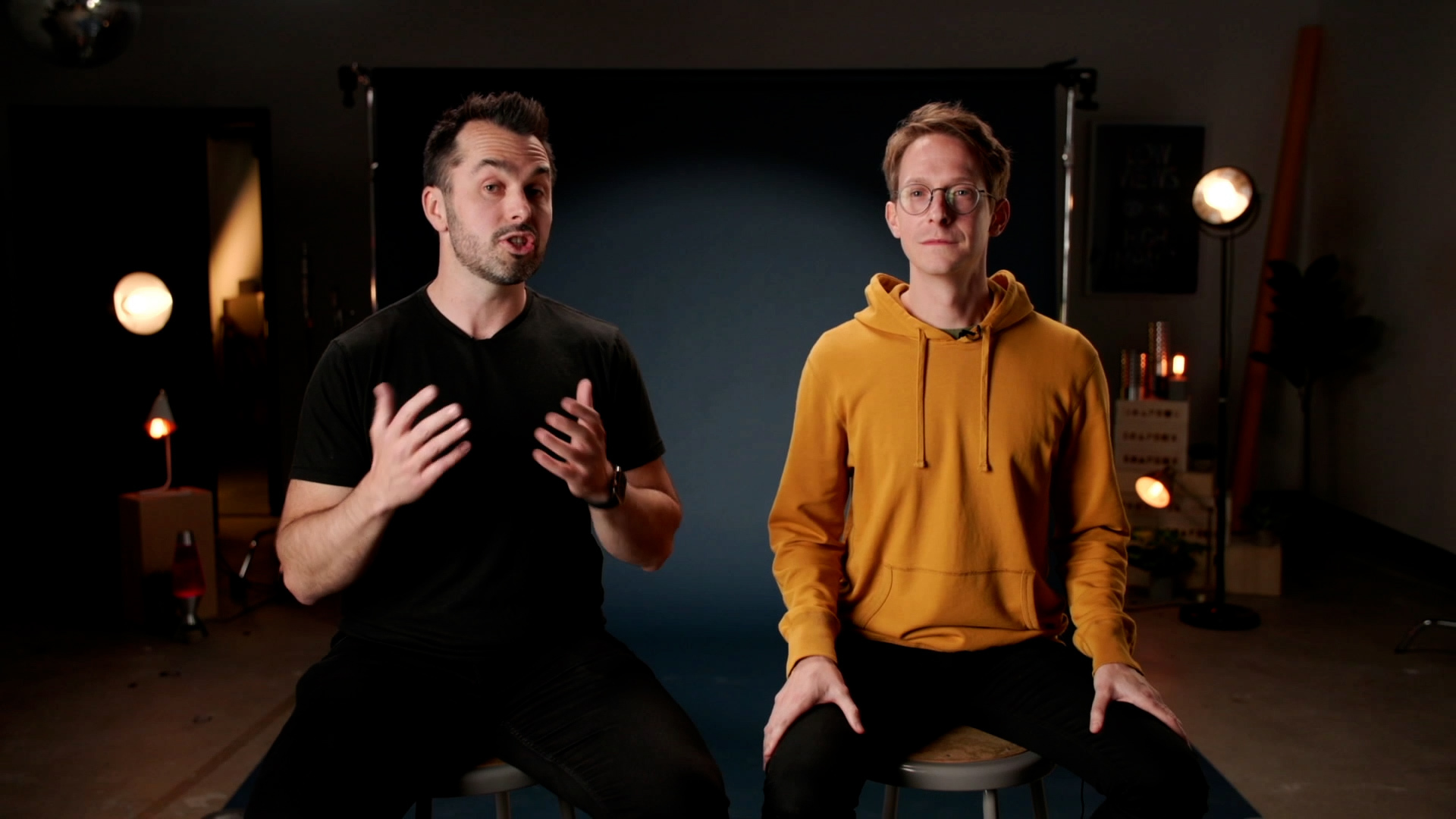Top 5 Insights from Wistia’s State of Video Report
We analyzed millions of videos across thousands of companies to understand what types of videos resonate with consumers and the challenges businesses face when creating them. And we put all of the insights, data, and benchmarks into our 2024 State of Video Report.
April 15, 2024
Topic tags
Sam Balter
Marketing

We analyzed millions of videos across thousands of companies to understand what types of videos resonate with consumers and the challenges businesses face when creating them. And we put all of the insights, data, and benchmarks into our 2024 State of Video Report. Grab a free copy here!
Here are some of the top trends we noticed:
- While viewers tend to watch bigger chunks of shorter videos, they spend more total time watching longer videos.
- Simple instructional videos (even with low production value) outperform other video types that are usually more polished.
- Captions improve engagement — and businesses are captioning their videos more than ever.
- Businesses are using artificial intelligence (AI) to save time in post-production.
- Website & email — not social media — are the primary locations where businesses are sharing their videos.
Now we’ll share our top takeaways and show you how to apply each one to strengthen your video strategy.
Insight #1: Shorter videos aren’t always better
We found that video engagement is only minorly different between one minute and five minutes, but it tends to drop significantly for videos that go over five minutes.
Even though shorter videos have a higher average engagement rate than longer videos, shorter isn’t always better. To get a fuller picture of how your video is performing, you need to look at the watch time, too. This is especially important if you’re sharing video content on YouTube, which gives more reach for videos with higher watch time.
The engagement rate is the percentage of your video someone watches, and the watch time is the total amount of minutes they spend watching your video. And — you guessed it — longer videos have a higher watch time.
As you can see, a 30–60 minute video has roughly half the engagement rate of a 1–3 minute video, but over 10 times the total watch time.
Insight #2: Unpolished instructional content breaks through with audiences
We uncovered something interesting: People find instructional videos much more engaging than other types of videos.
While the average engagement rate for all 3–5 minute videos is 43%, this figure rises to 74% when you look specifically at instructional videos.
Even as instructional videos get longer, viewers tend to stay engaged. TikTok’s research backs this up. They found that videos that showcase products in use saw notable boosts: a 25% increase in recall, 23% in ad likeability, 65% in brand affinity, and 18% in consideration compared to other videos that feature products.
Insight #3: Captions improve engagement
Captions don’t only make your videos more accessible, but they can also drive up viewer engagement. Research from TIkTok shows that captions boost viewer affinity by 95%, recall by 58%, likability by 31%, and uniqueness by 25%.
It seems that a lot of businesses are starting to realize that. We found that 254% more businesses captioned their videos in 2023 compared to 2022.
This might also be because AI has made it easier than ever to caption your videos. After surveying folks who use AI in video production, we found that the most common way they use AI is to generate transcripts and captions.
When you upload a video to Wistia, AI automatically transcribes it. And once the transcript is ready, you can turn it into captions just by toggling a button. Easy peasy.
Insight #4: AI simplifies video creation
The folks we surveyed told us that the biggest challenge in making videos is limited time or bandwidth. Luckily, AI can help with that.
Even though only 18% of them are using AI to make videos, more than 66% said it’s the technology they were most excited about for 2024.
Let’s talk about a few things businesses want to start doing with AI this year:
Generating script outlines: While most AI use cases focused on post-production, it was interesting to see the prevalence of AI for pre-production activities like scripting and outlines. Getting started is often the hardest part, so its great to see people using AI to overcome initial hurdles.
Generating visuals & fixing overdubs: One of the best post-production changes AI has brought is the ability to edit lines after you’ve wrapped up production. If your talent got a year wrong or mispronounced a product name, it could mean an expensive reshoot or an awkward edit. Now with AI tools like ElevenLabs, you can create an accurate-sounding overdub within minutes — without even leaving your desk.
Pulling clips from long-form videos: AI can transform the way you repurpose content. For instance, what once took over two hours — trimming a 60-minute webinar into engaging clips — can now be achieved in minutes thanks to AI-driven tools like Wistia’s video highlights feature. This is a huge win for marketers.
Insight #5: Your website is a great place to optimize your videos
When we looked at where businesses were sharing their videos, the number one spot was their own website. Email was the second most popular choice, with various social media channels following behind.
Hosting videos on your site is a great way to provide a memorable user experience and collect leads. There are two things you can start doing now:
- Group your videos into channels (a.k.a. video libraries) and showcase them on your site — this will make your collection of videos easier to navigate _and _improve your videos’ search rankings.
- Put interactive elements like calls to action (CTAs) and email capture forms into your videos to have them collect leads while you sleep.
Let’s dig into each one.
Grouping your videos into channels
Video channels improve both the viewer experience and search rankings for video content. You can organize your videos by theme in a layout similar to popular streaming services like Netflix or Hulu.
Channels do more than just make your site look good. They can also help your videos show up higher in search results.
In 2023, Google announced a big change in their rules and principles around video indexation and rankings. Now it prioritizes videos that are the primary focus of an individual page. Grouping videos into channels means each video gets its own individual page, thereby helping specific videos rank better in search.
Using interactive elements like CTAs and email capture forms
Some video hosting platforms (like ours) let you add interactive elements like CTAs and email capture forms to your videos.
When we looked at the Wistia-hosted videos that had an interactive element, we noticed there was a huge variation in the average conversion rate based on the video length and where the interactive element was placed in the video.
As you can see, conversion rates ranged from zero to as high as 24%. So it’s worth taking the time to choose the right place for a conversion opportunity. Most businesses are putting their conversion opportunities at the start of their videos, but that’s not always the best spot.
Want to improve your conversion rate? A general rule of thumb is if your video is less than five minutes, put the conversion opportunity at the end. And if it’s more than five minutes, put it at the beginning.
Download the report for more insights
Want to see benchmarks by industry, data on optimal video lengths for social, and a whole lot of other insights to help inform your video strategy? Download the full report! And if you’re looking for more actionable insights with a lot of pizzazz, grab some popcorn and watch our on-demand State of Video live show.







